#7 - Sunbelt Blues

When you live in the Great Lakes region of the United States, your friends in the South will occasionally remind you that you live in the Snowbelt, a reasonably accurate characterization that will have few Northerners up in arms. Published statistics would make it difficult to argue the point. A few years ago, an epic blizzard dumped more than five feet of snow on Buffalo, our neighbor city to the west, over a two-day period. The story was in all the papers.
Back in the fifties and sixties and early seventies, your snowbird friends said you lived in the Rustbelt. Also true, back in the day. The label was a reference to the oxidation that ate holes in fenders and floorboards and had car owners thinking about trading in their three-year-old rust bucket at conveniently the same time at which their three-year-old installment contract ran out. Those days are over. Cars with flopping fenders and step-through floorboards and headlights shining sideways are a distant memory. Rust has ceased to be a useful carrot to entice you to join the migration south because your sun and margaritas buddies now feel lonely down there.
For 28 amazing years, we've spent summers at our beach house on Lake Ontario that we built new from the ground up, ten minutes from our main residence in Webster. I should say Terry did. For most of those years, I had a print shop to run in downtown Rochester, so I would usually join her on weekends. The "Phantom," as I was known in the tightknit Seabreeze community.
We were, and still are, blessed with the most awesome neighbors at both locations. And because we live in the Snowbelt, we have no unfriendly critters to contend with. Certainly no sharks or poisonous snakes or alligators. We’re safe from coastal floods, wildfires, earthquakes, and hurricanes. With the Great Lakes being the largest body of fresh water on earth, there’s also not a snowball’s chance in hell we’ll ever run out of water. Lake Ontario may be the smallest of the five Great Lakes in surface area, but it holds four times as much water as Lake Erie, making it one whale of a big puddle. Across it, miles beyond the water’s edge, in what used to be our front yard, lies Toronto, Canada.
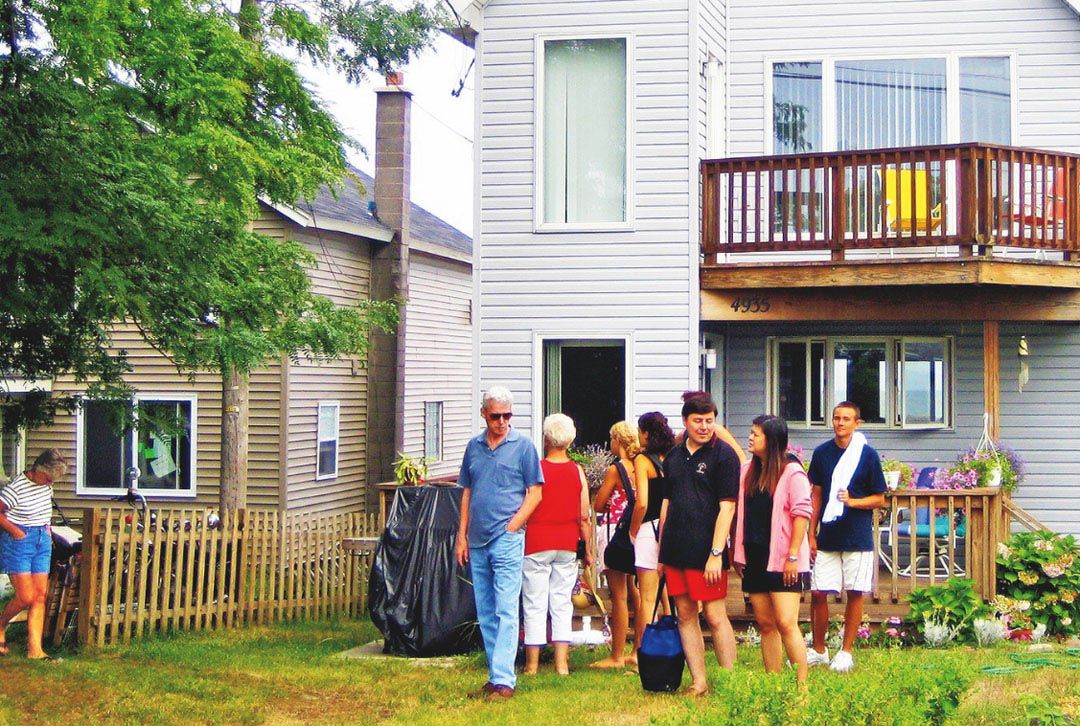
In 2018 we reluctantly traded our summer house on the beach for a winter house on the Space Coast of Florida. Yes, Florida! The place with the snakes and the mosquitoes and the alligators. It wasn't a decision reached lightly. Owning a home on the beach at Seabreeze had been a little girl's dream as far back as she could remember. Terry was able to live that dream for a quarter-century, in an era of magical summers, not for her alone, but for my grandson Karl and Terry's nephew Christopher, who spent many years growing up at the lake house during their summer vacations. So many memories built too, with Devon and Nina and Eliza, the kids next door, and Alayna and Reo, their parents. All three of Terry's "people" were born when Terry was living there, able to give free rein to her intense devotion to children.
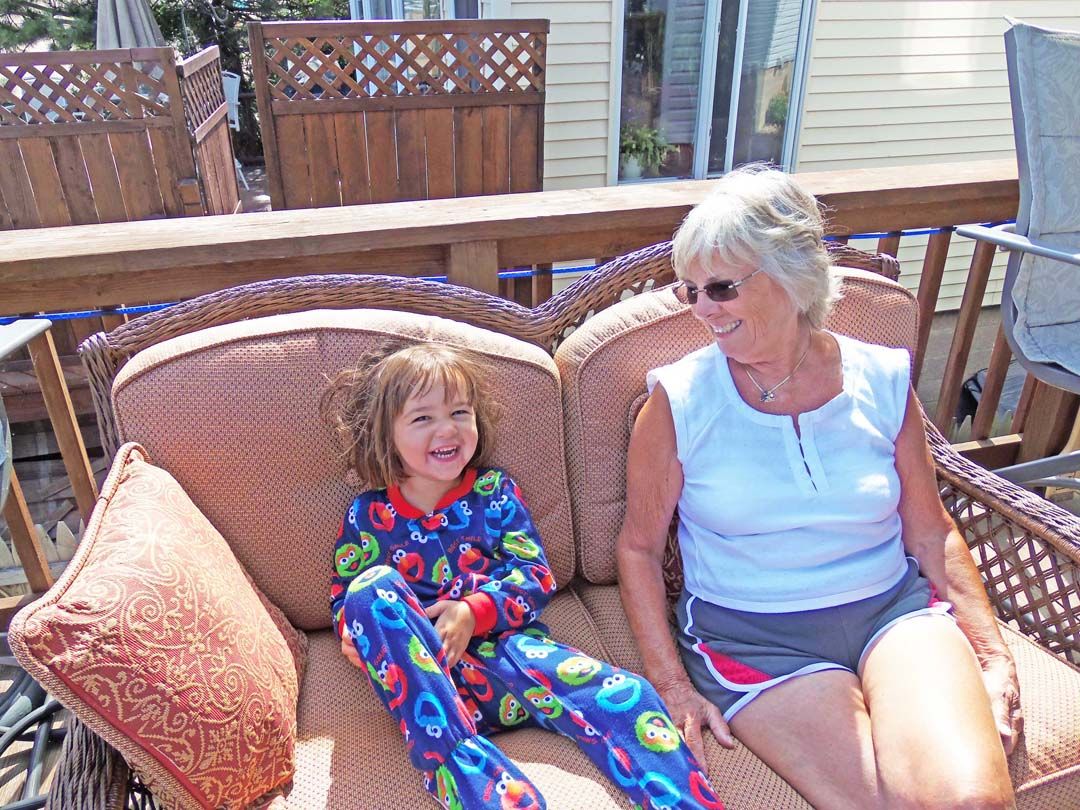
Unfortunately, like many upstate New Yorkers, we were confronted by more than one incentive to sell our Seabreeze lake house and become snowbirds, two of which mattered: It was getting to be a health risk to shovel show, and Terry and I were both struggling to pay escalating local property taxes, the highest in the nation. In 1990, the year we built our lake house, annual taxes were hovering around $3,500. In 2018, when we sold it, they had soared to $11,420.
By comparison, we pay just $2,846 and no HOA a year in Florida. Could we have kept the lake house and bought our winter home outright? Probably, we're mortgage-free. But how many homeowners do you know who look forward to spending their golden years cleaning and maintaining three homes for two people to live in?!
For the record, we're now in our fourth year of spending winters in Florida. In those four years, I've been bitten by mosquitos, have seen but wasn't attacked by three snakes (all non-poisonous – there are few poisonous types in Florida), and have yet t0 see an alligator. Again for the record, I'm not out looking for one. I have also recently been harassed by a large goose (playfully, you could tell her heart wasn't in it) that came strolling into our unfenced front yard, which I've been told is being nursed back to health by one of the neighbors after she was nicked by a car (the goose, not the neighbor). So far, no tornados or hurricanes. It's 78 degrees on Merritt Island in Florida as I'm writing this, 18 degrees in Webster, New York, on January 10, 2022, at 3:20 PM.
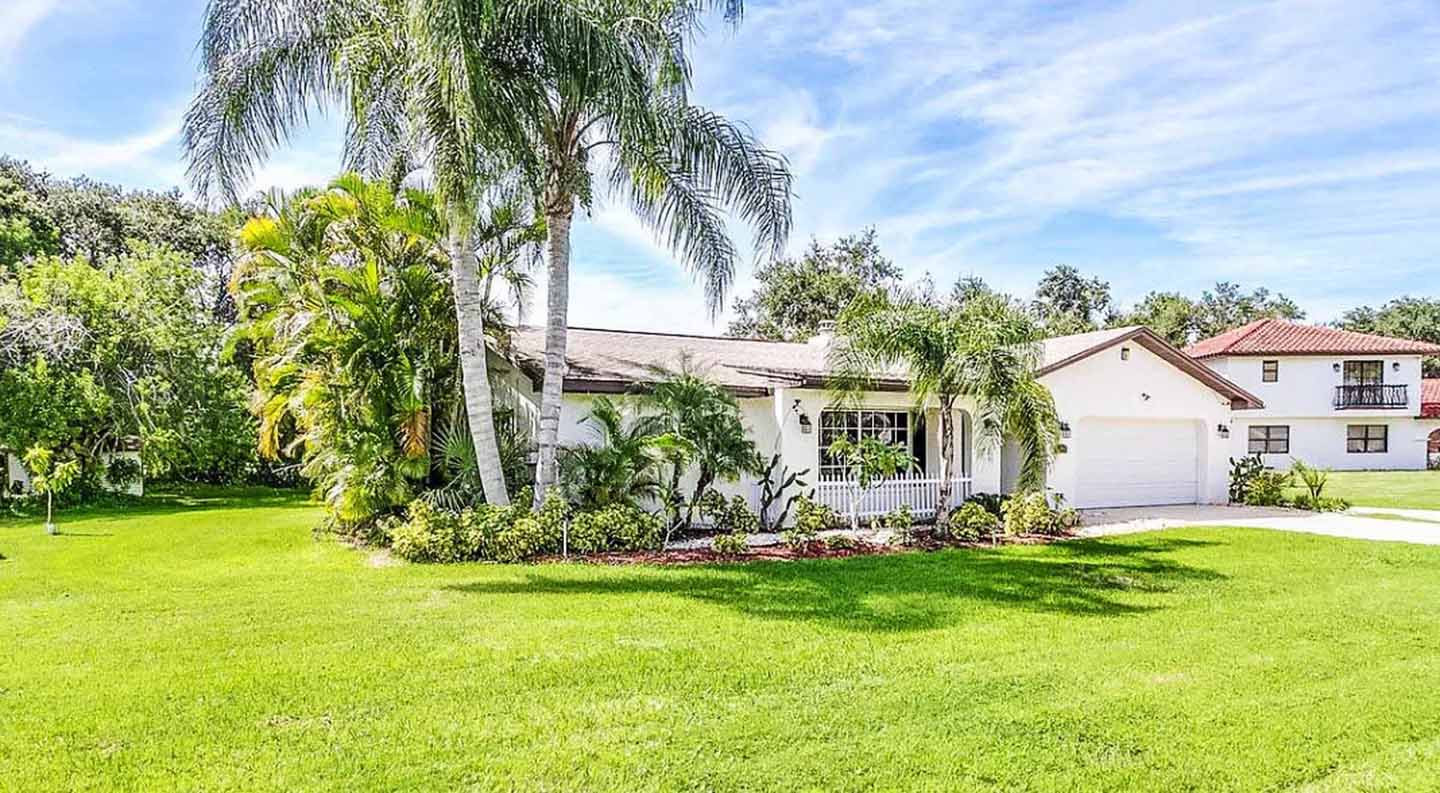
Also on the plus side, we are once again blessed with amazing neighbors. With the Canaveral Seaport and its cruise ships and seafood restaurants, and the Kennedy Space Center all just 15 minutes away, Terry and I won't be moving off Merritt Island any time soon. Did I mention the new 125 mph Brightline High Speed Train that will cut travel time between Orlando and Miami to three hours this year?
Note to Self: You're a dedicated early riser. Keep in mind that the reason you get up at 6:30 AM most mornings, even in Florida, isn't to squander the day with jibber jabber, but to complete your mission and bring in the ship. In case you've forgotten, you have a book to write. Three books, actually, seeing it's a trilogy. Also, and I can't emphasize that enough, you've reached a point in your life where you most certainly lack the time, and increasingly the inclination, to crisscross any U.S. State to meet faraway friends for dinner, then drive home in the dark in barely enough time to get up again and have breakfast. The years you have left to live are already measured in single digits. Getting up for breakfast is no longer an activity you can depend on.
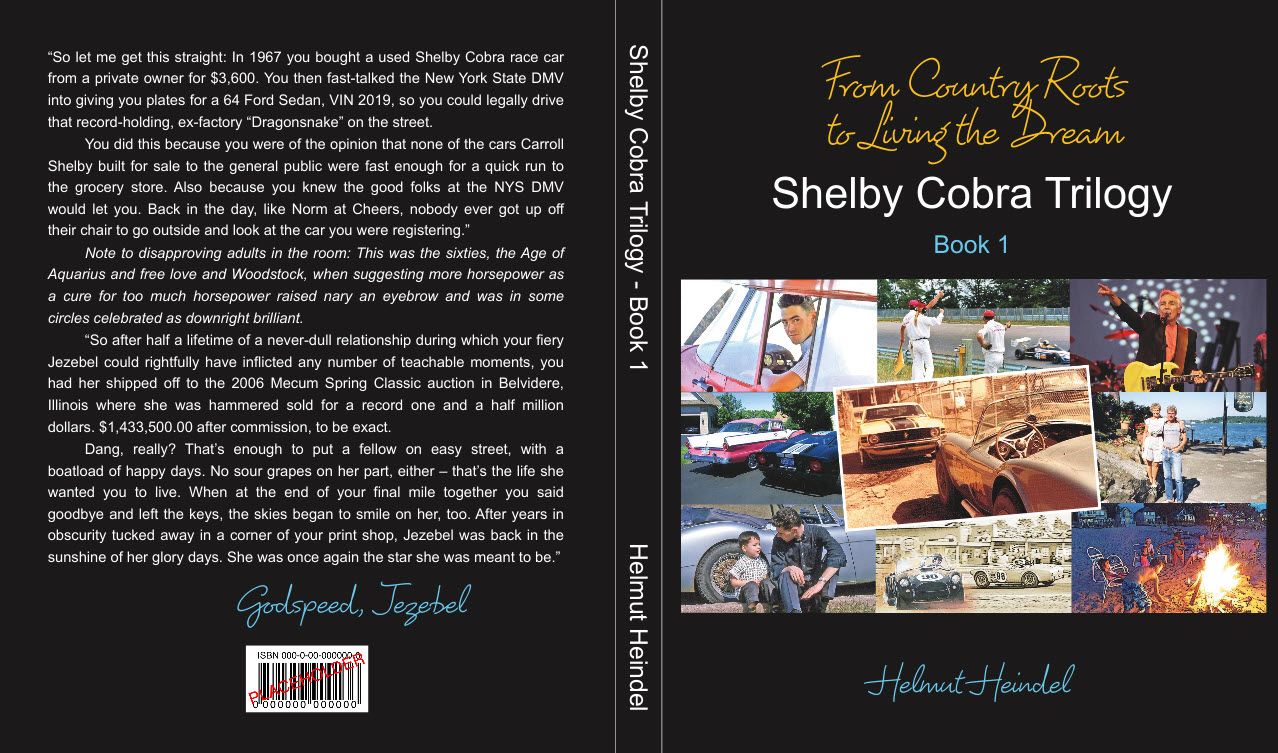
On that uplifting note, let's go back to the fifties where we left off, with the flopping fenders and step-through floorboards and headlights shining sideways.
The period did have its bright spots. Each year in the fall, carmakers would unveil their new model lineups in dealers’ showrooms. This was Detroit’s Super Bowl, celebrated with great fanfare. No one got to see the new models until the official introduction – there were no spy photos in magazines. Some dealers even paid local farmers to store the new cars in their barns until the unveiling. For days it’s what people talked about around the water cooler. If you’re too young to have been a part of it, you can’t imagine how uniquely satisfying it was to pull into the driveway of friends and relatives and show off your latest pride on wheels. On the downside, the short buying cycle did rob you of the excuse to start shopping for a new car because the ashtray was full.
Now, I will admit that the Snowbelt is no car lover’s paradise. Case in point: Maybe it was the balmy Texan winter at Ft. Hood that persuaded me to buy an Austin Healey 3000 in 1962, the year I was discharged. It was a long time ago, hard to pin down. I also don’t recall why I thought driving a sports car year ‘round straight through the winter was a good idea for a family with a two-year-old. The Healey had 4.5 inches of ground clearance. The average seasonal snowfall in Rochester totals four feet. That’s messed-up math with foreseeable consequences. Getting through snowdrifts often meant helping hands and a small folding shovel the army calls an entrenching tool.
Some of the results weren’t so foreseeable. I remember the time when the Healey slid backward down a sheet of black ice a quarter of the length of a football field, with me in the car no longer a driver but a mere spectator. For coincidental convenience, it happened in front of a hospital. Another time a shopping cart decided to go rogue in an icy supermarket parking lot, head straight for the Healey, and put a dent in the passenger door; also with me waiting in the car to keep an eye on things. It happened so fast I couldn’t reach across and manually crank down the window. If you’ve lived through the TV series “All in the Family,” you may have seen the ‘Cling Peaches in Heavy Syrup’ episode where Edith, having never driven or owned a car, still manages to put a dent in one. Yeah, like that.
No place is perfect. After battling snow and ice in the Healey, I swore that no matter how many or how few vehicles we owned, one of them would have to get us through the winter without having to use a snow shovel. The Ford F-150 4×4 now sitting in our driveway validates that commitment.
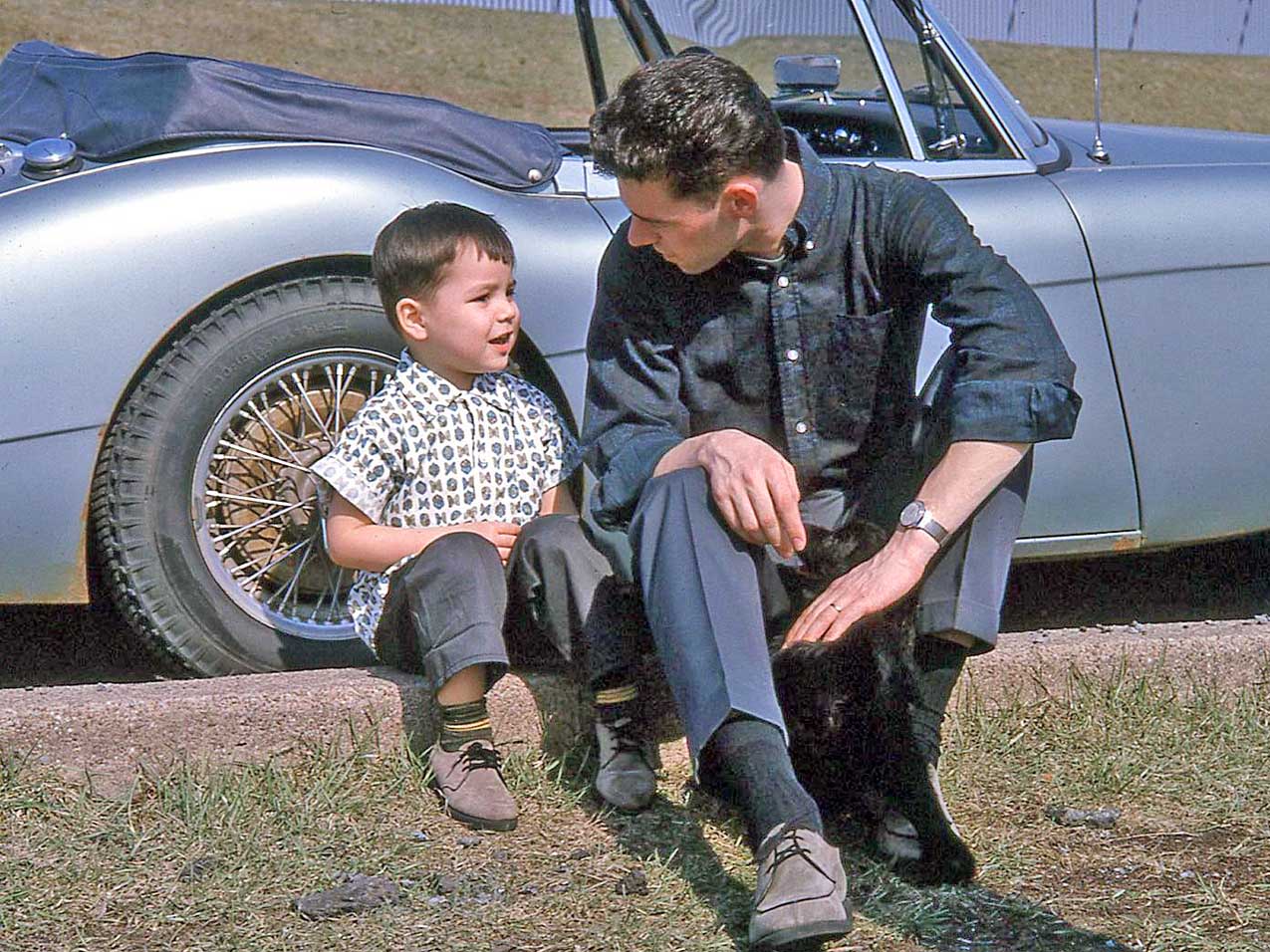

Of course, you don’t actually need snow or ice to put a big dent in things. That summer I began to search for a cheap but reliable winter car. Think of VW Beetles what you will, few cars were going to be more reliable than the pristine 1959 Beetle an older lady brought in to F.A. Motors in Rochester for routine service and an oil change. What should have been the ordinary “Ma’am, I’m sorry but you can't pick up your car today. You see – well, no, Ma’am, it won't be ready tomorrow, either, but I can explain: The thing is, your Beetle fell off our grease rack.”
As soon as I heard I called the dealership and bought the Beetle sight unseen. There’s no heater in those things, not even a blower, so I knew it wouldn’t make the best winter car. Putting on a heavy coat and earmuffs and mittens to keep warm does nothing to defrost the windshield. A gasoline-fired heater was a dealer-installed option that never caught on. Could be because the car got better gas mileage than the heater did.
I bought the Beetle despite its austere amenities because of the car’s superior traction. The full weight of the motor was sitting on top of the driving wheels. This unlucky buggy still ran like a champ despite its big tumble. The bashed-in roof attracted curious looks but in no way affected drivability. Nor did the jammed passenger door that would stay shut forever, as tightly as if it had been welded. The price was right; and the color was nice, Fjord Blue.
The Beetle as a second car had one other thing going for it: it brought me closer to the Cobra I was determined to buy one day. With two cars in the family, buying a pure two-seater had become a viable option. It wouldn’t be happening this year – we were still paying off the Healey. Even as a trade-in, the paid-in equity was too low to serve as a down payment on a brand new $5,995 Shelby Cobra. Used Cobras were scarcer than hens’ teeth. They weren’t about to appear in the classifieds until Shelby American scaled up production.
For its day, the Austin Healey 3000 was the best true sports car the average Joe could afford. I had enjoyed navigating in it at rallies, and Effie and our son Ray and I all found ourselves looking forward to sunny weekends so we could take a drive out into the country. The car had great accoustics and good power, and I loved the electric overdrive. To quote from the March ’63 review in Car & Driver: “In many ways, the fun of driving a Healey is directly traceable to the car’s four-speed transmission and its ‘Laycock de Normanville’ overdrive. Running fast in third and fourth, using the overdrive switch like another shift lever, can be pure joy. The shift lever’s action is stiff but accurate, and declutching to switch the overdrive in and out, though quite unnecessary, results in crisp, fast shifts that are a delight to the ear and the seat of the pants.”
Memories are still fresh of taking the car out on the first snow-free, sunny spring day, with the top down and the windows up and the heater as high as it would go, blowing warm air on our faces. Heaven forbid I should stall the Healey at an intersection. “Give it some gas, Dad” would come the quick and annoyingly accurate remedy from the half-pint in the back seat. I’m thankful for those memories. People don’t seem to go on spring rides much anymore.
If there was a downside to the big Healey, in fact to any imported car of the era, it was the lack of reasonably priced options to make it go faster. Mind you, the car ran strong with its three-liter inline six and twin SUs. But once you swapped out the mufflers, put on Koni shocks, and upgraded the infamous Lucas ignition, things got pricey. And that wasn’t the worst of it. Installing a hotter cam and tuned headers and Weber carburetors – the next most logical steps for more power – would have completely destroyed the car’s character.
That all changed when the British Rootes Group unveiled the Sunbeam Tiger for the 1965 model year at the New York Auto Show. Based on the Alpine and designed in part by American car builder and racing legend Carroll Shelby, the Tiger combined the style and comfort of a British sports car with the heart of a reliable (and massively modifiable) Ford V8. Lack of visual clues between the humble Alpine and the new Tiger made the Tiger the ultimate sleeper. Not until you opened the hood and spied the V8, or stepped on the accelerator and felt the burnout did you get a wakeup call: 87 ponies generated by the 2,253 pound Alpine, versus 164 horsepower – nearly twice as much – by the only slightly heavier 2,565 pound Tiger. With only a few more payments to go on the Healey and a new Shelby Cobra still out of reach, the only question left was: When can we schedule a test drive?
The cockpit of the Tiger proved to be even more livable than that of the big Healey. The car had a telescoping steering wheel, great seats and adequate space, with a parcel shelf behind the seats for junior. Drivability was excellent. So good, in fact, that Effie and I drove the two-seater from Rochester all the way to Mexico one year, with a stop at Ft. Hood to visit former co-workers at Post Ordnance before taking the long way home with a drive along the Gulf Coast. With ample V8 power, a 2.32 close ratio gearbox and tall 2.88:1 rear end, first gear would take you to 60 mph when pushed. Personally, I would have preferred the wide ratio box that came later, but nothing in the car ever felt like it was working hard.
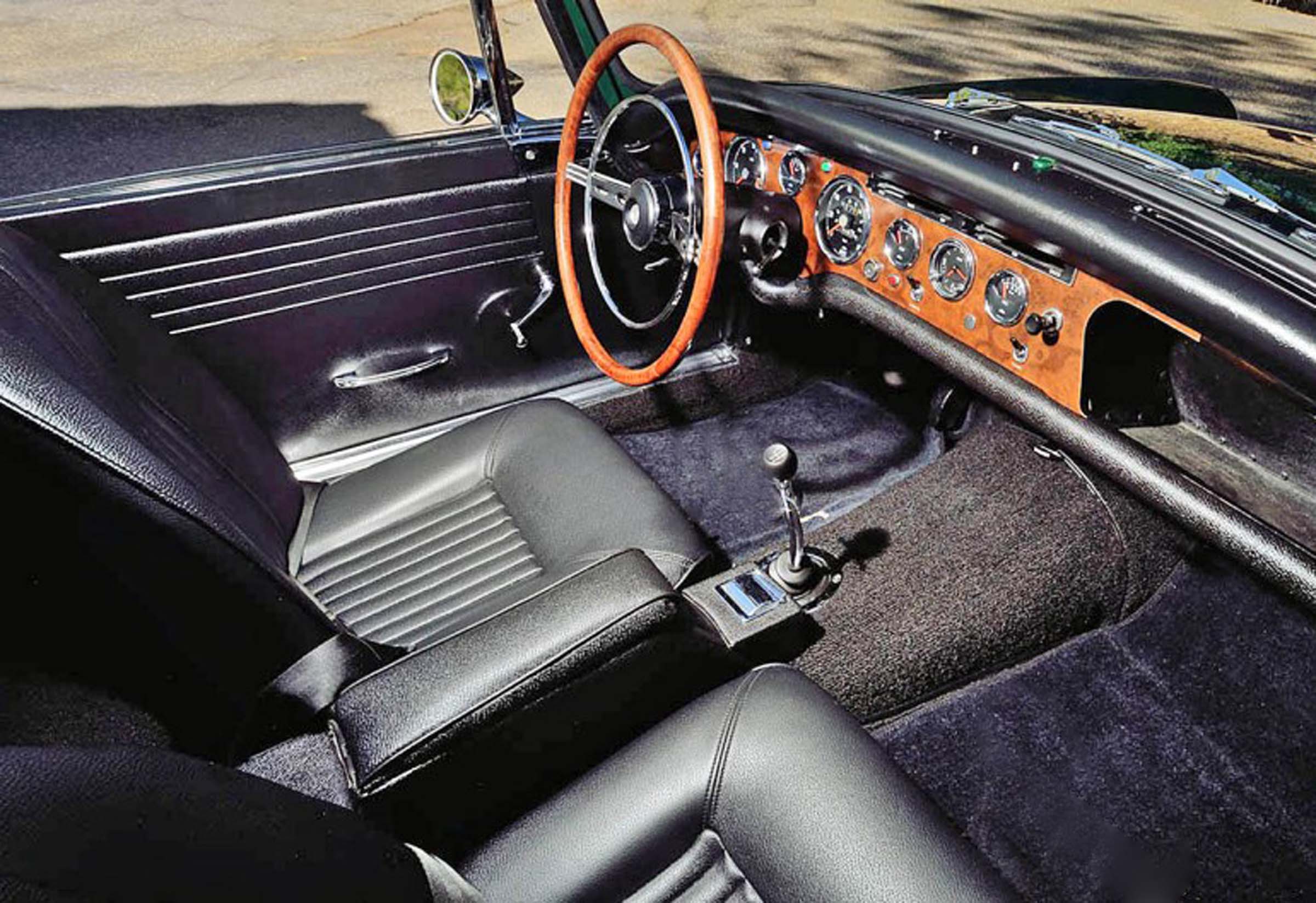
In terms of go-fast parts, the Tiger was a game changer. Take the carburetor that came with the car as standard equipment. I mean, seriously, please take it. Every time I raised the hood, that wimpy two-barrel intake sitting on top of the 260 cubic inch Ford begged me to reach for my credit card. Especially when a ‘LAT 1 Super Induction Kit’ with four-barrel Holley and custom Edelbrock manifold could be had from Doane Spencer at ‘Los Angeles Tigers’ for downright reasonable money. The skinny rear tires were sometimes being overwhelmed by the extra power, and you couldn’t go much wider because of the tight wheel wells inherited from the Alpine. Adding Koni shocks and LAT Traction Masters fixed most of that. The final modification was a transistor ignition system. All in all, a terrific car. But it still wasn’t a Cobra!
On November 30, 1965, shortly after I had traded in the Healey for the more powerful Tiger, Ralph Nader published Unsafe at Any Speed: The Designed-In Dangers of the American Automobile. The book became a bestseller practically overnight. It also prompted the passage of the National Traffic and Motor Vehicle Safety Act of 1966, seatbelt laws in forty-nine states, and other road safety initiatives. Most egregious of all, it killed off convertibles.
Now, I’m totally onboard with safety and buckling up, but outlawing ragtops, that’s overreach. It’s bad enough to have to put up with the growing tendency in Washington to dictate rather than to govern. When misguided legislators now shove their pet ideological agendas down our throats, they incite rebellion. That may well have happened here. Not only are convertibles back in sizeable numbers, Nader’s little book may have energized the late sixties craving for big-block muscle cars, the 425+ hp Hemis and ZL1 Chevelles and Ford Thunderbolts. Today you can walk into a Dodge dealership and drive out with a 700+ hp Hellcat. I love fast cars; I’m feeling them. And I get downright giddy when the suits shoot themselves in the foot – using howitzers paid for with lobby money. Outstanding!
Wearing a seatbelt is a different topic altogether and smart, and car guys should set an example. I happen to know it’s smart from racing and because of what happened when Tom Palmer and Dave Zimber and I attended Curtis Turner’s "School of High Performance Driving" at the Charlotte Motor Speedway, a long time ago. One of us forgot to buckle up before practicing a bootleg turn. You could tell what was about to happen because the seatbelt was, plain to see, hanging out the bottom of the driver’s door. Before anyone could intervene, the reverse-to-forward spin had clearly been botched and the car was now teetering on the 24-degree banking, inches away from barrel-rolling down onto the infield. The hurt of flailing around inside the Camaro, unrestrained, would have delivered a lesson none of us had bargained for.
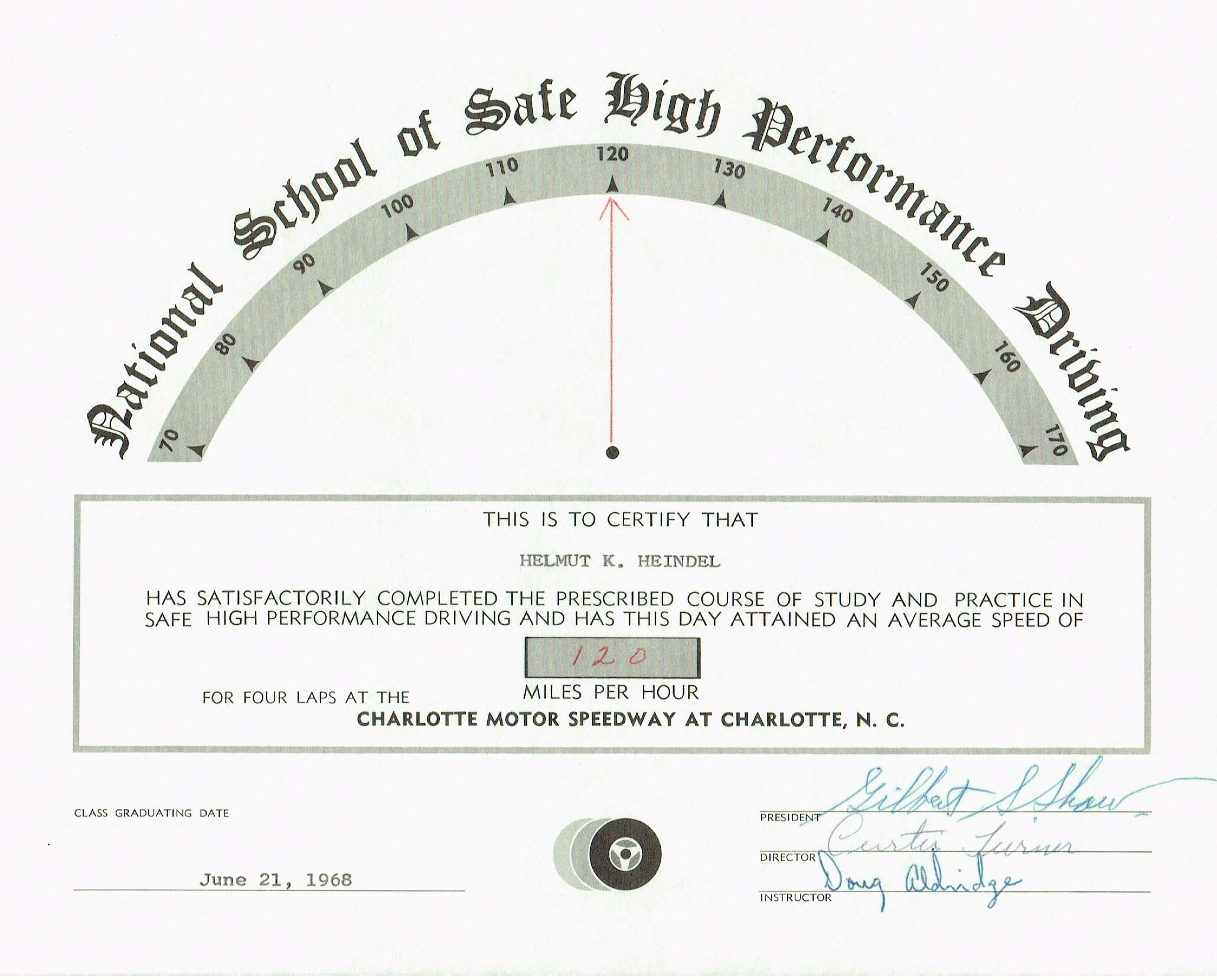
Bootleg turns are where a moonshine whiskey runner drives up to a bridge and discovers revenuers trying to box him in on the other side. They're an evasive 180 degree skid performed at around 40-45 mph, at the end of which the car will have turned completely around, ready to accelerate and depart in the opposite direction. The reason we wanted to get proficient in such stunts straight out of Hollywood had nothing to do with future career plans, least of all involving revenuers. The point was to get a seat-of-the-pants feel for maintaining control of a car after it gets away from you, same as learning how to recover from a spin or a stall in an airplane. It takes practice to get the hang of it but becomes second nature eventually. It will take far less practice (so I’ve been told) if one is securely buckled in behind the steering wheel, not flopping around in the passenger seat into which the G-force of the spin has deposited his or her sorry ass. Just saying.
By the fall of 1966 I had owned the Sunbeam Tiger for nearly two years. The search for a used Cobra was still alive, but the urgency for finding one had moved to the back burner. I liked the Tiger, even more so after all the upgrades. I could now afford to wait for the right car. But what exactly was the right car? What would qualify a specific Cobra as the one I wanted to take home with me? A journalist once described the Lamborghini Miura as “a car that could only with justification be driven by a flaming redhead, nude except for a sable coat.” If true it would exclude me on so many levels. But that right there, that outrageous profile, I was satisfied would make a good start.
Daydreaming aside, my hereditary need for speed would likely still have a say in the selection. History told me I would do to the Cobra what I did to the Tiger – make the car run faster and look the part, spending half my paycheck in the process. Not only for speed and handling equipment, but also for cosmetic bits. Mag wheels and a hood scoop come to mind. And absolutely a set of Webers. Downdraft Webers on a V8 was what you framed and hung on your bedroom wall. There wasn’t enough space in the Tiger to install Weber carburetors. There would be abundant space in a Cobra. Factory comp cars raced with them, and the whole setup could be ordered straight out of the Shelby catalog. For a mere $1,230, which today would equal $8,724 adjusted for inflation. Okay, so not chicken feed.
In fact, that’s what may have sparked my ‘Aha’ moment: Why look for a street Cobra on which I was going to blow a bundle when I could buy a race Cobra with the expensive stuff already paid for? The DMV wouldn’t care, they won’t even see the car. Good thinking, Bubba, but here’s the rub — race cars get bent a lot. On a Cobra, the big money was in the aluminum body, hammered out by hand, and in the frame and suspension. Ford motors and transmissions were cheap by comparison.
But wait, there was a type of racing where the opposite was true: Drag Racing! There the engines and transmissions get beat up while body panels stay whole except on Funny Cars. By happy coincidence, I knew where a drag race Cobra was stabled and could be looked at not two hours from here. You’ve met Jerry Mayo. Jerry and I raced the Mini Cooper together. Turns out he was also chief mechanic on a Cobra known as the ‘The Fuchsia One’ that his friend Ed Hedrick campaigned out of Wellsville, a town in the Southern Tier. Ed was an engineer. Jerry and I worked together at Bausch & Lomb.
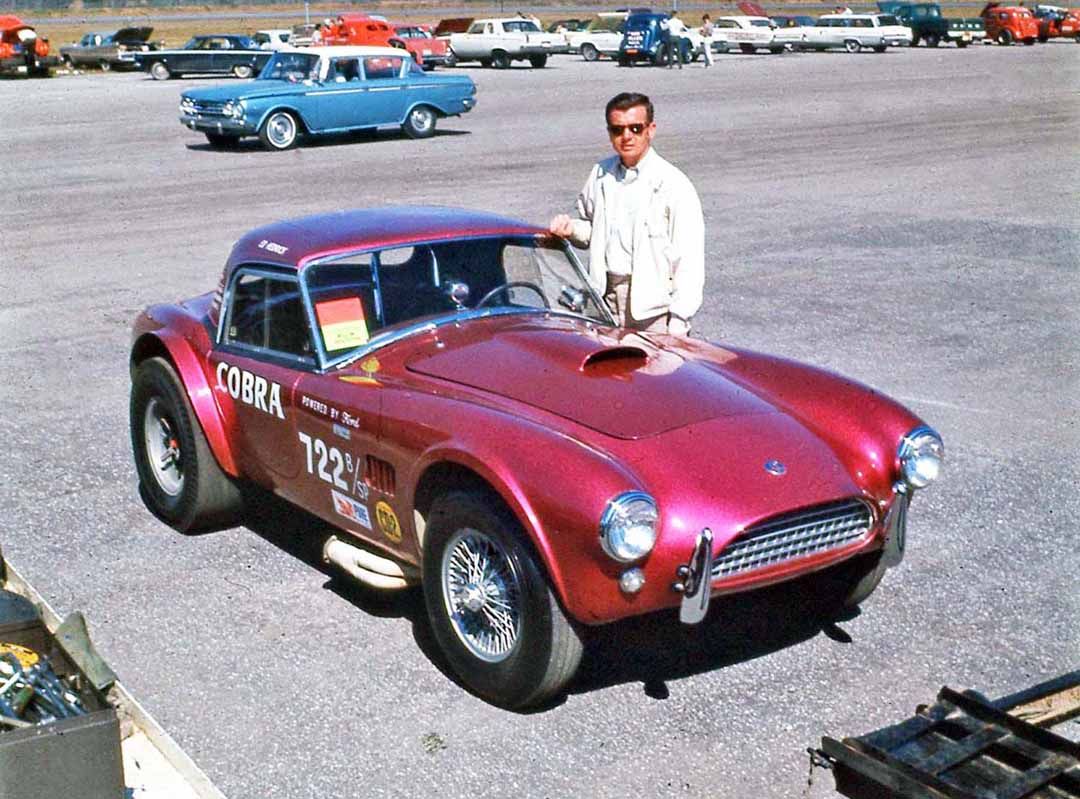
Bet you can see where this is going. As soon as Jerry and I entered Ed’s garage, I knew instantly that whatever lingering questions I may have had about the heart and soul of my future ‘best car forever,’ the answer was staring me in the face in all her metalflaked purple glory. This car was gorgeous, the Cobra of any car nut’s dreams. The trick would be to find one. Locating any racing Cobra for sale was like looking for a needle in a haystack. With a mere handful of drag racing Cobras being campaigned across the entire country, hunting down an animal that rare for sale would make the haystack even bigger. Doubts began to creep in. Maybe this wasn’t such a hot idea after all. I was glad to have bought the Tiger.
For the record, the year was now 1967. Ed would win his class at all National Events and become Street Eliminator Champ in NHRA Division 1. In addition, he would be the NHRA World Points Champion (most points in NHRA competition). Ed ran the car in all three classes. His Cobra already held the record in B/SP when it set the record in C/SP with 11.51 @ 115mph. An impressive performance that made CSX2093 the winningest Cobra in drag racing history.
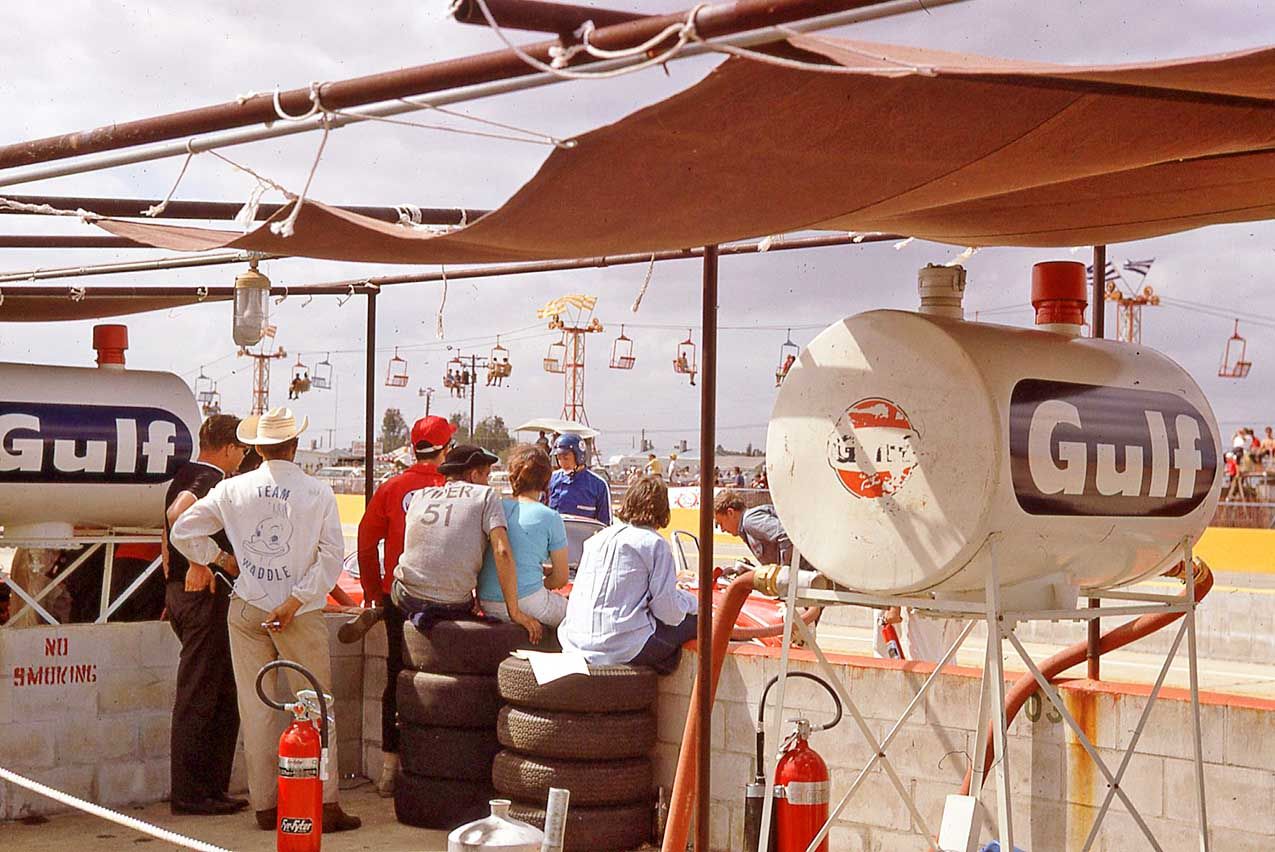
That April, a group of us decided to drive to Florida for some sun and fun on Daytona Beach, to be topped off by watching the 12-hour Endurance Race at Sebring. For whatever reason, Jerry couldn’t join us for the partying but would come down for the race. When we did meet up he said he had a surprise for me. With that he pulled out a newspaper clipping he had cut out of the National Dragster, the official publication of the NHRA. The small 4 x 4.5 inch ad began “Must Sacrifice. My loss, your gain.” I’ll be damned! Jerry had done the impossible, he had found a ‘Dragonsnake’, CSX2019, the twentieth Cobra built and the first of two drag cars raced by Shelby American. Complete with mag wheels and steel headers and friggin’ Webers! Are you kidding me? The price: $3,600. Just a few dollars more than what I had paid for the Tiger.
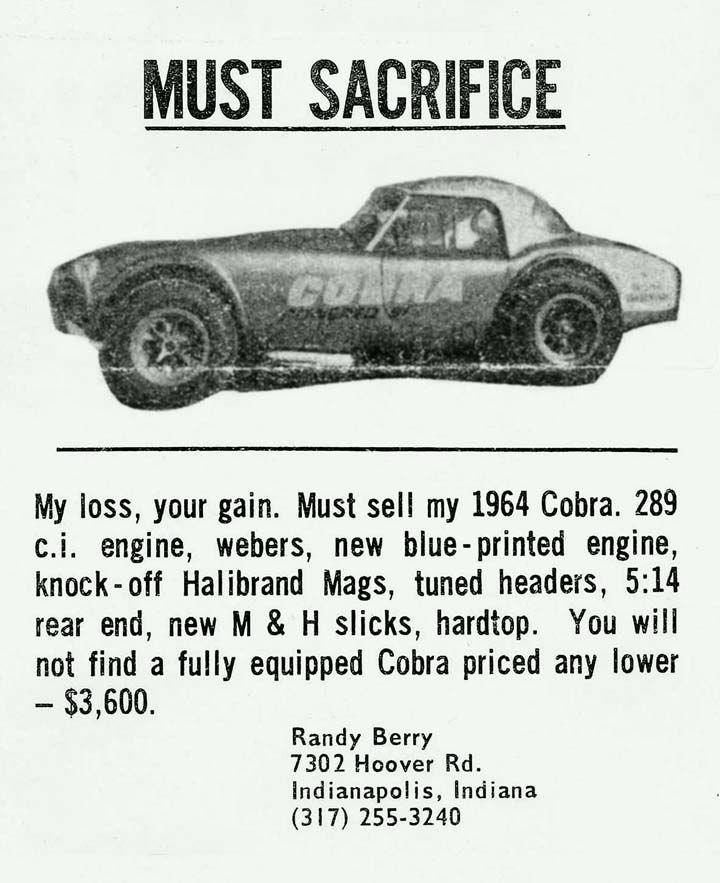
Thirty-nine years later, at the 2006 Mecum Spring Classic auction, that little classified ad would change my life and Terry’s in ways none of us could ever have imagined. If you missed the introduction, the car was hammered sold for $1,525,000. That’s one million five in round numbers. I haven’t stopped celebrating and will forever thank Jerry and a Dragon Snake named "Jezebel" for that.
Copyright 2022 - Helmut Heindel